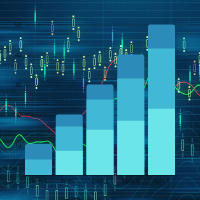What is Market Data and Why should your Company take it Seriously?
29-06-2021 | treasuryXL | Arjen van der Sluis |
Working in the market data space for many years now, one of the most challenging aspects has always been to explain: What is Market data? In the early days such a question was much easier to answer as the size of the market data landscape was far less complex and much smaller. To keep it simple: market data was price and trade-related information and there were only a few data providers out there: Reuters, Telerate and exchanges. Since then, a lot has changed. Bloomberg shook up the market by offering a one-stop-shop terminal solution including trading capabilities and a Bloomberg-wide messaging system. Much data has been added since, like broker estimates, ownership data, index data and OTC instruments, to mention only a few.
More recently, everyone is talking about Alternative data or Environmental, Social and Governance (ESG) data. These developments, along with increased market demand, have broadened the scope of market data. Nowadays a good description of market data is “all data related to the investment cycle”.
What does Market Data mean for You?
International corporations may, for example, need foreign currency, seek protection of currency swings, need short-term cash or make daily valuations of their outstanding positions. Your investment cycle will be risk adverse and your market data requirements will include Foreign Exchange and Rates information, perhaps also some counterparty company accounts or macro-economic indicators and news.
To meet these needs and to make sure you are operating under the right market conditions, corporations may have a professional setup of market data terminals from Bloomberg or Refinitiv, FX data feeds and Treasury Management Systems (TMS). All based on different commercial models and usage rights as contractually agreed with the supplier (vendor compliance).
As a market data consultant, it is in our nature to review market data costs and -usage among financial institutions. Corporate treasurers might not be looking at market data with the same perspective as we do. Nevertheless, a regular Market data health check is advisable. Questions to be asked include: “Will market data help to perform a better job, in other words, gain a competitive advantage?” or “Why pay for a full market data terminal while there are cost-effective alternatives out there?”
Among financial institutions we see a trend to apply user profiling. Your role and workflow processes should determine the type of services used and should also justify the more expensive high-tier terminal if and when opted for. More importantly, favorably priced alternative terminals are available with excellent data sets and functionality. As an alternative to Bloomberg messaging, financial institutions have started adopting Symphony as collaboration tool and to manage workflows including proprietary data sets.
In-House Systems
Regulatory pressure has led to more emphasis on risk management and the valuation process, resulting in an ever-growing number of data feed offerings. Depending on in-house requirements there may be a need for plain vanilla instruments or the more complex instruments that push the need for evaluated prices like Bloomberg BVAL. Not only pricing data, but information like entity reference data is becoming critical as well to manage your counterparty risk. In response vendors offer tailormade solutions, but it comes at a cost.
For data to feed in-house systems or databases, we see a trend among financial institutions who are moving to the cloud to lower their Total Cost of Ownership (TCO) or to avoid restrictive usage rights when consuming the data via a 3rd party market data vendor. It will also help them in being more flexible in response to new data requirements.
Concluding, market data is a dynamic business. Looking at market data costs and usage, by definition, you cannot compare a corporation with a financial institution. Having said that, this does not mean market data can be neglected. With market data costs rising by more than 5-10% annually and new solutions and vendors entering the market, it is worth reviewing your market data requirements regularly.











